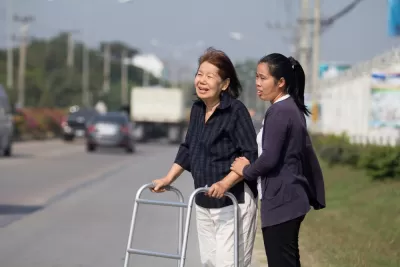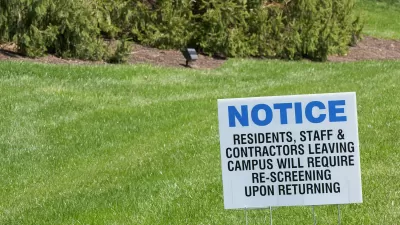Less dense communities provide specific challenges in providing services to residents in need of extra care. More seniors living in suburban and rural communities will require new and scalable solutions.

Laura Maggi shares news of a new study from the Joint Center for Housing Studies of Harvard University that reveals the demographics of aging in the United States.
A key finding from the study: "A growing number of older people are living in suburban or rural areas that are less likely to have the kind of services needed to help people stay in their own homes as they age, a new report found."
More specifically: "The share of adults who are 65 or older living in low-density metro census tracts increased by more than 6 million people from 2000 to 2016….That is about 15 million people, with another 8 million living in non-metropolitan area neighborhoods."
The report suggests that communities must act now to begin filling the gaps in services required by aging populations. There are existing models to copy, as well. "For example, the CAPABLE program developed by the Johns Hopkins School of Nursing is aimed at helping lower-income seniors age in place. The program teams up a nurse, occupational therapist and handyman, who make home visits over four months to figure out how people can safely remain in their own homes," writes Maggi.
FULL STORY: A Growing Need for Aging-in-Place Services in Suburbs and Rural Areas

Planetizen Federal Action Tracker
A weekly monitor of how Trump’s orders and actions are impacting planners and planning in America.

Map: Where Senate Republicans Want to Sell Your Public Lands
For public land advocates, the Senate Republicans’ proposal to sell millions of acres of public land in the West is “the biggest fight of their careers.”

Restaurant Patios Were a Pandemic Win — Why Were They so Hard to Keep?
Social distancing requirements and changes in travel patterns prompted cities to pilot new uses for street and sidewalk space. Then it got complicated.

Platform Pilsner: Vancouver Transit Agency Releases... a Beer?
TransLink will receive a portion of every sale of the four-pack.

Toronto Weighs Cheaper Transit, Parking Hikes for Major Events
Special event rates would take effect during large festivals, sports games and concerts to ‘discourage driving, manage congestion and free up space for transit.”

Berlin to Consider Car-Free Zone Larger Than Manhattan
The area bound by the 22-mile Ringbahn would still allow 12 uses of a private automobile per year per person, and several other exemptions.
Urban Design for Planners 1: Software Tools
This six-course series explores essential urban design concepts using open source software and equips planners with the tools they need to participate fully in the urban design process.
Planning for Universal Design
Learn the tools for implementing Universal Design in planning regulations.
Heyer Gruel & Associates PA
JM Goldson LLC
Custer County Colorado
City of Camden Redevelopment Agency
City of Astoria
Transportation Research & Education Center (TREC) at Portland State University
Camden Redevelopment Agency
City of Claremont
Municipality of Princeton (NJ)





























